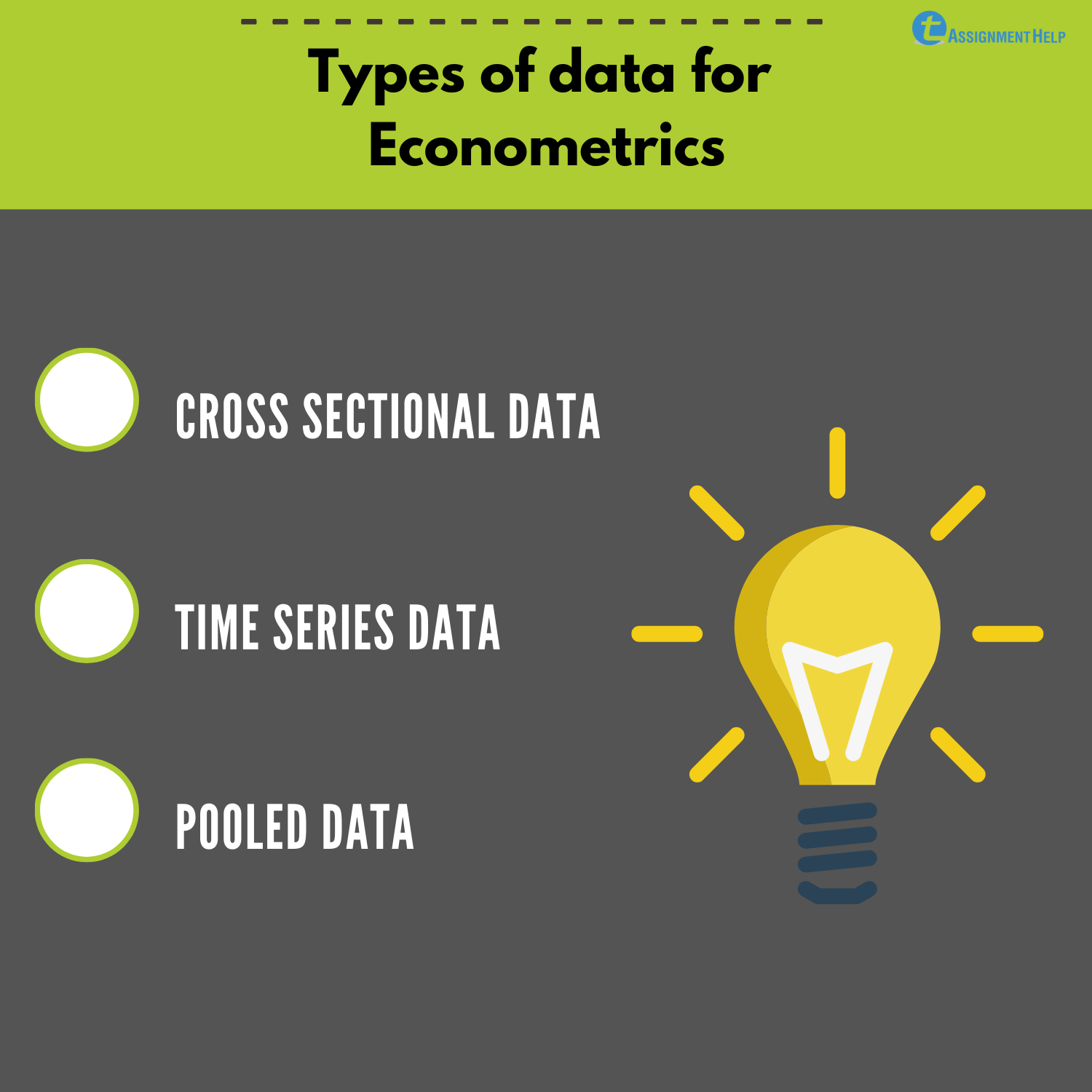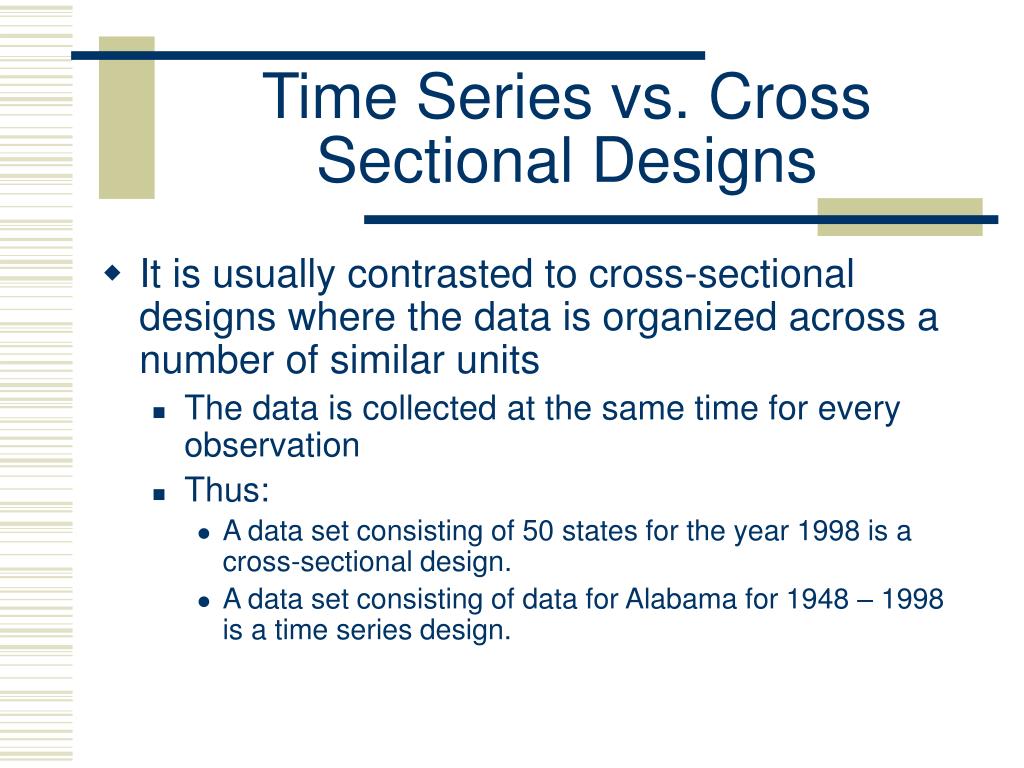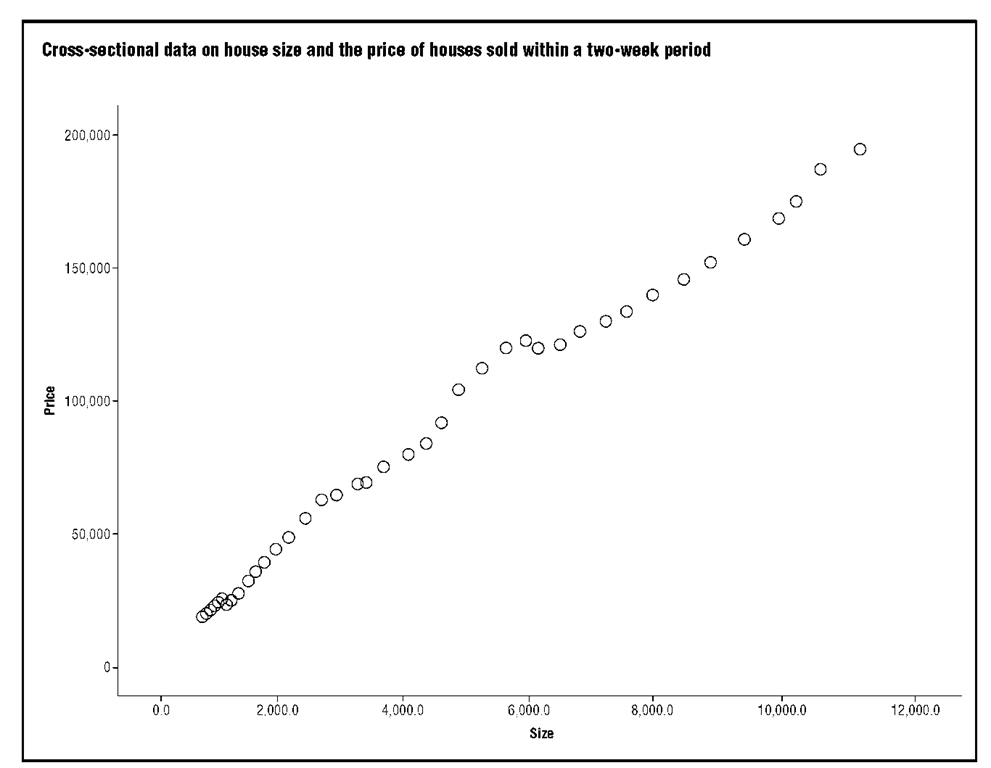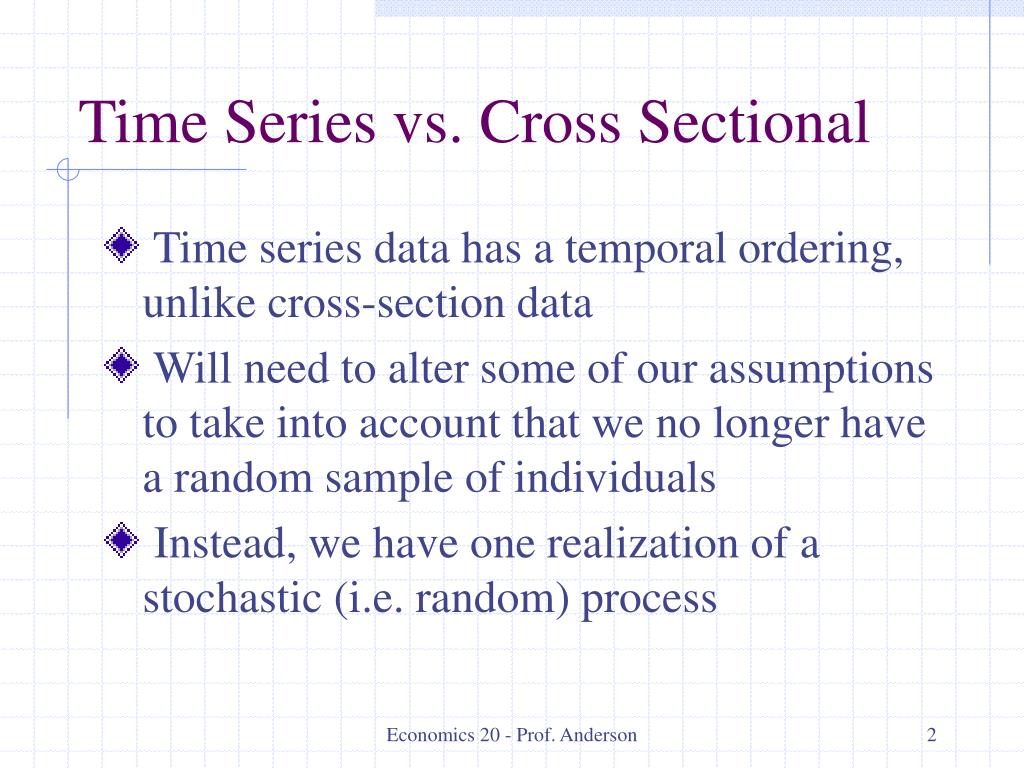
Cross Sectional Vs. Time Series The Classroom
How can I convert multiple time-series columns into a cross-sectional data? 3. Collecting series from Pandas groupby object. 1. Pandas: group columns into a time series. Hot Network Questions Why following ST_Intersects SQL returns false Extracting special sublists from a list What part of ascorbic acid is oxidized when it reacts with iodine?.

Crosssectional timeseries FGLS regression (n = 168) Download Scientific Diagram
Here, we are interested in time-series cross-sectional models, which have multiple series. All of the issues mentioned above get much more complicated in TSCS data becuse there are, in effect, many different time-series that we're trying to model simultaneously. Further, the parameters are often constrained to be the same across the different.

multiple regression ISPSS Crosssectional time series analysis Cross Validated
Unlike cross-sectional data, which captures a snapshot in time, time series data is fundamentally dynamic, evolving over chronological sequences both short and extremely long. This type of analysis is pivotal in uncovering underlying structures within the data, such as trends, cycles, and seasonal variations.

Cross Sectional Data And Other Data Types In Econometrics Total Assignment Help
The obtained data are converted to the cross-sectional time series (CSTS), for its effectiveness in representing the variation trends of multiple variables, and the data are used as the input to the deep learning algorithms. Experimental results indicate that the CSTS together with the bidirectional long short-term memory (Bi-LSTM) architecture.
[Solved] Classify the distribution as a crosssectional study or a... Course Hero
Cross-sectional data refers to data collected at a specific point in time, typically from different individuals or entities. It provides a snapshot of a population at a given moment and allows for comparisons between different groups. On the other hand, time series data is collected over a period of time, usually at regular intervals.

Can anyone tell me about cross sectional study design? ResearchGate
Two common approaches in data analysis are time series analysis and cross-sectional analysis. In this blog post, we will explore the differences between these two methods and how they offer unique perspectives to understand data. Understanding Time Series Analysis

How to Turn CrossSectional into TimeSeries Momentum (and be home in time for dinner)
Panel data, also known as longitudinal data or cross-sectional time series data, refers to data that contains observations on multiple entities or individuals over a period of time. Each entity is observed repeatedly, allowing for the analysis of both cross-sectional and time series variations. Panel data can be structured in a balanced or.

TIME SERIESCROSS SECTIONAL (TSCS) REGRESSION ANALYSIS OF FIRM PERFORMANCE* Download Table
As a consequence, cross-sectional evidence can only be said to be consistent with a diffusion process; it cannot definitively demonstrate that diffusion has occurred. To gain greater leverage in the diagnosis of spatial diffusion we ideally would wish to have observations arrayed over both space and time (see also Franzese and Hays 2007).

Time series vs cross sectional data YouTube
Cross-sectional time-series regression Stata fits fixed-effects (within), between-effects, and random-effects (mixed) models on balanced and unbalanced data. We use the notation y [i,t] = X [i,t]*b + u [i] + v [i,t] That is, u [i] is the fixed or random effect and v [i,t] is the pure residual.

PPT Time Series Analysis PowerPoint Presentation, free download ID3796181
The cross-sectional, time series, and panel data are the most commonly used kinds of datasets. A cross-sectional dataset consists of a sample of individuals, households, firms, cities, states, countries, or any other micro- or macroeconomic unit taken at a given point in time. Sometimes the data on all units do not correspond to precisely the.

Types of Data CrossSectional, Time Series and Panel Data Data Analysis YouTube
Data can be classified into cross-sectional, time-series, and panel data depending on the data collection method employed. Cross-sectional data: Refer to a set of observations made at a point in time. Samples are constructed by simultaneously collecting the data of interest across a range of observational units — people, objects, firms, etc.

POOLED TIME SERIES AND CROSSSECTIONAL DATA (Social Science)
In statistics and econometrics, cross-sectional data is a type of data collected by observing many subjects (such as individuals, firms, countries, or regions) at a single point or period of time. Analysis of cross-sectional data usually consists of comparing the differences among selected subjects, typically with no regard to differences in time.
[Solved] Classify the following graph as a crosssectional study or a time... Course Hero
For cross3sectional analysis (a single time3point - or average over time) Variables Cases Time For classic time3series (a single case - or average case) Variables Of course, both representations can be extended in hierarchical fashion to represent units embedded within higher3level units (countries, schools, or whatever).

PPT Time Series Data PowerPoint Presentation ID575094
Cross-sectional data refers to a set of observations made at a single point in time. Samples are constructed by collecting the data of interest across a range of observational units - people, objects, firms - simultaneously.

Time Series vs. Cross Sectional Data YouTube
Although cross-sectional data is seen as the opposite of time series, the two are often used together in practice. Understanding Time Series A time series can be taken on any variable.

A se casatori Romantism accelerare cross data Sacou subţire Prim
In cross-sectional analysis one wants to find out which variable of many has better results than the others at a specific point in time. Suppose, e.g., you run a series of cross-sectional regressions for each month in order to generate a time series of parameter estimates, and then follow by comparing these parameter estimates.